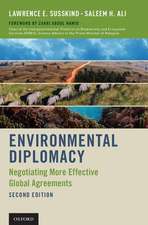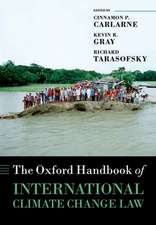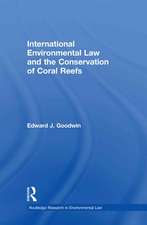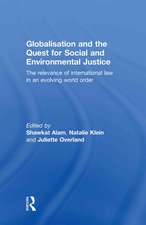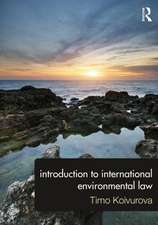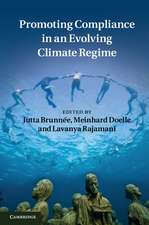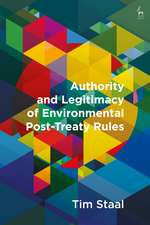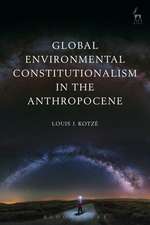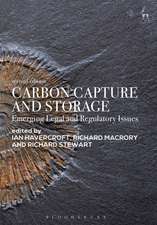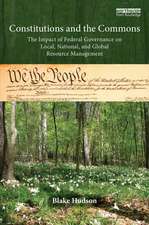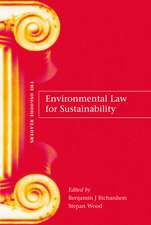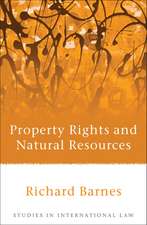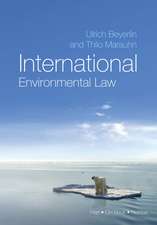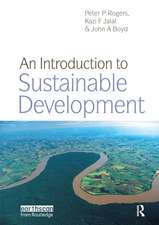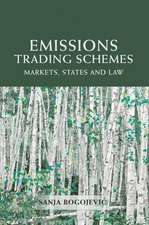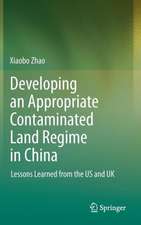The Art of Environmental Law: Governing with Aesthetics
Autor Benjamin J Richardsonen Limba Engleză Hardback – 11 dec 2019
| Toate formatele și edițiile | Preț | Express |
|---|---|---|
| Paperback (1) | 314.99 lei 6-8 săpt. | |
| Bloomsbury Publishing – 16 iun 2021 | 314.99 lei 6-8 săpt. | |
| Hardback (1) | 572.15 lei 6-8 săpt. | |
| Bloomsbury Publishing – 11 dec 2019 | 572.15 lei 6-8 săpt. |
Preț: 572.15 lei
Preț vechi: 817.91 lei
-30% Nou
Puncte Express: 858
Preț estimativ în valută:
109.49€ • 112.13$ • 91.08£
109.49€ • 112.13$ • 91.08£
Carte tipărită la comandă
Livrare economică 19 martie-02 aprilie
Preluare comenzi: 021 569.72.76
Specificații
ISBN-13: 9781509924608
ISBN-10: 1509924604
Pagini: 368
Dimensiuni: 156 x 234 mm
Greutate: 0.69 kg
Editura: Bloomsbury Publishing
Colecția Hart Publishing
Locul publicării:London, United Kingdom
ISBN-10: 1509924604
Pagini: 368
Dimensiuni: 156 x 234 mm
Greutate: 0.69 kg
Editura: Bloomsbury Publishing
Colecția Hart Publishing
Locul publicării:London, United Kingdom
Caracteristici
Argues emotional aesthetic connection to environmental law empowers its enforcement
Notă biografică
Benjamin J Richardson is a Professor of Environmental Law at the University of Tasmania. His international academic career has spanned law faculties in Australia, Canada, New Zealand, the Netherlands and the United Kingdom, and formerly he held the Canada Research Chair in Environmental Law at the University of British Columbia, and the Global Law Visiting Chair at Tilburg University, the Netherlands. He practises environmental stewardship at his Tasmanian eco-sanctuary, Blue Mountain View.
Cuprins
PART IFOUNDATIONS1. Environmental Aesthetics and Art I. Taking Aesthetics SeriouslyII. Outline of the Book III. The Concept of the Aesthetic IV. Environmental Aesthetics V. Art and the Environment VI. Leveraging Change VII. Conclusion 2. Aesthetics and Environmental LawI. Law and Aesthetics II. The Making of Environmental Law III. Environmental Policy Discourse IV. Environmental Regulation V. Nationalising Nature VI. Conclusion 83. Governance Challenges I. Orientation II. Codifying Beauty III. Competing Values IV. Biased Aesthetics V. Absent Aesthetics VI. Art of Seduction PART IISTORIES4. Vanquished Nature I. Faking Nature II. Domesticating Nature III. Looks that Kill: Persecuting the Beautiful IV. Museums for Nature's Relics V. Out of Sight, Out of Mind VI. Conclusion 5. Corporate Greenwashing I. Orientation II. Figurative CSR Discourse III. Aesthetics and Corporate Communications IV. Regulating Green Illusions V. Conclusions6. Ecological Restoration I. Aesthetics of Nature's Damage and Recovery II. Post-Mining Rehabilitation III. Ecosystem Restoration IV. Restorative Art V. Conclusion 7. Climate Change I. The Issues II. Aesthetics and Climate Change III. Climate Art and Activism IV. Climate Change Mitigation V. Climate Change Adaptation VI. Climate Engineering PART IIIASPIRATIONS8. Critical Aesthetics I. Law and Curating Aesthetics II. Counter Aesthetics III. Social Aesthetics IV. Aesthetics of Engagement and Vulnerability V. Adjudicating Aesthetics VI. Ending
Recenzii
If your senses require a break from the quotidian bad news about our planet, I recommend this delightful book about beauty and environmental law.
Few law books have as many illustrations as this one, few draw together so many disparate strands and few inspire the reader to reflect as thoroughly on how deeply the way we think and act, and therefore how the law is shaped, is affected by perceptions of which we are usually at best only half-aware. It makes a persuasive case for paying more attention to aesthetics in thinking about the law.
This is a work of both breadth and detail, and in producing it Richardson blends the vision of a landscape artist with the focus of a miniature painter . The Art of Environmental Law truly is an impressive work . This is a book that will support multiple readings, for its richness is lost in a single turn through its pages.
Benjamin Richardson's The Art of Environmental Law is a fascinating overview that is remarkably readable despite its considerable length. Indeed, its greatest strength is its interdisciplinarity. Richardson draws on studies of environmental law and landscape management, biodiversity conservation, museum practices, advertising, ecotourism, environmental restoration, land art, and environmental activism, as well as philosophical environmental aesthetics. The result is a valuable resource for anyone interested in the many different avenues through which aesthetic values, broadly construed, can enter into the development and application of environmental law . For those working in the field, Richardson's call for the development of more effective means of adjudicating aesthetic disputes will be a welcome endorsement of the practical value of philosophical contributions to environmental aesthetics and conservation.
The Art of Environmental Law: Governing with Aesthetics covers a great deal of ground. Richardson artfully weaves discussions of broad and complex environmental challenges with personal anecdotes and interesting tales.
Few law books have as many illustrations as this one, few draw together so many disparate strands and few inspire the reader to reflect as thoroughly on how deeply the way we think and act, and therefore how the law is shaped, is affected by perceptions of which we are usually at best only half-aware. It makes a persuasive case for paying more attention to aesthetics in thinking about the law.
This is a work of both breadth and detail, and in producing it Richardson blends the vision of a landscape artist with the focus of a miniature painter . The Art of Environmental Law truly is an impressive work . This is a book that will support multiple readings, for its richness is lost in a single turn through its pages.
Benjamin Richardson's The Art of Environmental Law is a fascinating overview that is remarkably readable despite its considerable length. Indeed, its greatest strength is its interdisciplinarity. Richardson draws on studies of environmental law and landscape management, biodiversity conservation, museum practices, advertising, ecotourism, environmental restoration, land art, and environmental activism, as well as philosophical environmental aesthetics. The result is a valuable resource for anyone interested in the many different avenues through which aesthetic values, broadly construed, can enter into the development and application of environmental law . For those working in the field, Richardson's call for the development of more effective means of adjudicating aesthetic disputes will be a welcome endorsement of the practical value of philosophical contributions to environmental aesthetics and conservation.
The Art of Environmental Law: Governing with Aesthetics covers a great deal of ground. Richardson artfully weaves discussions of broad and complex environmental challenges with personal anecdotes and interesting tales.


